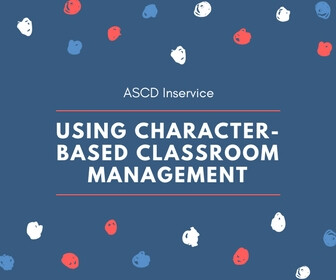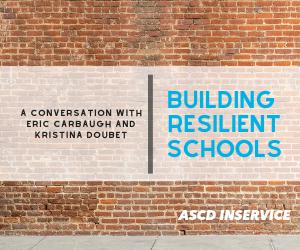Although social-emotional learning (SEL) is an undeniably popular trend in today’s education space, the movement is just getting started. After decades of research supporting SEL’s efficacy and the successful implementation of pilot programs in schools across the country, educators, parents, and administrators increasingly acknowledge the need for children to develop social-emotional skills in order to thrive as students and as adults. In our rapidly evolving social landscape, the value of SEL is becoming more apparent by the minute. Life’s inevitable challenges, whether it’s a personal relationship gone awry, a professional setback, or even reconciling social media with reality, require a greater level of social-emotional competency to successfully navigate than ever before.
Sustaining SEL efforts over the long term is crucial to allow children to adequately develop these skills. But that sustainability faces barriers in the form of staff turnover, limitations on resources, and competing for precious classroom time against other programs and initiatives. We see SEL as something that can’t be taken for granted and that’s well worth the planning and effort that sets up an SEL program for lasting success. Here are six key ways to support sustaining SEL PreK–12 efforts districtwide:
1. Clearly Align Social-Emotional Learning with Your Vision and Mission
SEL might not be the main focus of your vision and mission, but the success of both necessitate people working together to reach a shared goal—that’s SEL in action. It may seem like a given, but it’s important to reinforce that connection to those implementing SEL in your school community. If SEL isn’t already seen as integrally connected to achieving your mission and vision, you may want to consider highlighting SEL’s value and implementation in your district action plans and strategic goals.
2. Address and Support the Critical Role of Principal Leadership
The role of the principal in SEL sustainability cannot be overstated. Prepare principals to lead schoolwide SEL by providing them with foundational SEL professional development in advance of SEL rolling out across the school or building.
- Include principals in district SEL decisions (such as needs assessment, curriculum selection, and evaluation)
- Provide principals with concrete tools to help build adult SEL competence and to reinforce SEL skills schoolwide with staff, students, and families.
3. Take the Time to Establish and Maintain Buy-In
Encouraging buy-in will look different at every school and in every district—approaches vary greatly, and the effort is often guided by a number of individuals, not just one person leading the charge. Here are a few examples of how to establish and maintain support:
- Share the data. Climate surveys, attendance records, and achievement statistics are all ways to connect SEL to improved student outcomes. This SEL meta-analysis is another resource for those looking to dive into the research.
- Start a book club. Invite staff to join or start their own book club focused on SEL-centric titles. (Look into whether your school or district might have a continuing education credit system or additional funding available for this type of professional learning.)
- Identify SEL champions. Ask individuals who are already active supporters of SEL to share with a group their personal experiences of how SEL helped them and their students. These individuals might also be willing to lead staff learning on SEL with an article review, webinar, or book study.
- Let the kids do the talking. Connect with students directly about how they see social-emotional skills benefitting them, and include student voices in how you implement and sustain any social-emotional learning programs.
4. Make It a Team Effort
Turnover is a reality in the K–12 and early-learning fields. Rather than having one person lead SEL implementation, establish a core leadership team to avoid SEL activity dropping off and expertise being lost in the wake of staff changes. Members of a solid team can also support each other through challenges, addressing issues in the moment and brainstorming action plans for the future.
Tip: Try sending out a staff feedback survey a few times a year to learn what’s working, what aspects people are having issues with, and where they need more support.
5. Involve New Staff or Teachers
Turnover also means new staff joining our organizations nearly every year. That means it’s vital to establish an onboarding plan for new staff to familiarize them with the value of SEL and its integral place in your school and district from the outset. New hires are often the ones bringing new ideas and energy to the table. Don’t miss an opportunity to harness that enthusiasm by inviting them to join your SEL implementation team—you never know who will become your next SEL champion.
6. Include Resources for Families
Share resources with parents to extend SEL from classrooms to homes. Second Step is a program for preschool through middle school districts that offers extensive resources for principals, teachers, and families. Every Second Step lesson includes a Home Link activity that gives family members and caregivers the opportunity to get involved in the skills their children are learning. The activity extends student exposure to the newly learned social skill, reinforcing their continued use of the skill outside of the classroom.
Since 1979, Committee for Children has championed the cause of educating the whole child through advocacy, social-emotional learning (SEL), and child safety programs. Today, its programs reach more than 14 million children in more than 70 countries. The Second Step school program is rooted in SEL and helps schools become supportive learning environments, providing educators and families with tools to take an active role.







